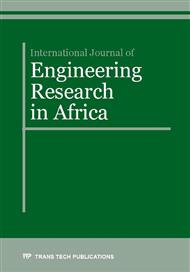p.1
p.7
p.14
p.22
p.33
p.45
p.59
p.68
p.83
Porous Silicon Antireflection Coating for Solar Cells Using Chemical Etching in HF-FeCl3-H2O
Abstract:
Stain etching of silicon solar cells in HF-FeCl3-H2O solutions as a last step in the processing sequence is reported. The etching was carried out without protecting the screen printed contacts. Following optimization of the solution composition and using very short etching times to alleviate the contact degradation problem, the solar cell weighted reflectance (Rw) between 400 and 1100 nm could be reduced from 38.23% to 11.54%. For the best small area cell (~20 cm2), the PS antireflective layer led to a relative improvement of 62.74% in the short-circuit current density, the FF was enhanced by 5.5% absolute, the open-circuit voltage was increased by 1.2 mV and the cell conversion efficiency was raised by 4.1% absolute from 5.4% to 9.5%. The best large area cell (~78 cm2) shows the following changes after porous layer formation: a relative improvement of 45.43% in the short-circuit current density, an improvement in the FF of 7.4% absolute, an increase in the open-circuit voltage by 7.5 mV and an enhancement in the cell efficiency by 4.0% absolute from 6.2% to 10.2%. This method shows a great potential for the cost-effective reduction of reflectance losses in industrial silicon solar cell manufacturing.
Info:
Periodical:
Pages:
1-6
Citation:
Online since:
February 2016
Authors:
Price:
Сopyright:
© 2016 Trans Tech Publications Ltd. All Rights Reserved
Share:
Citation:


